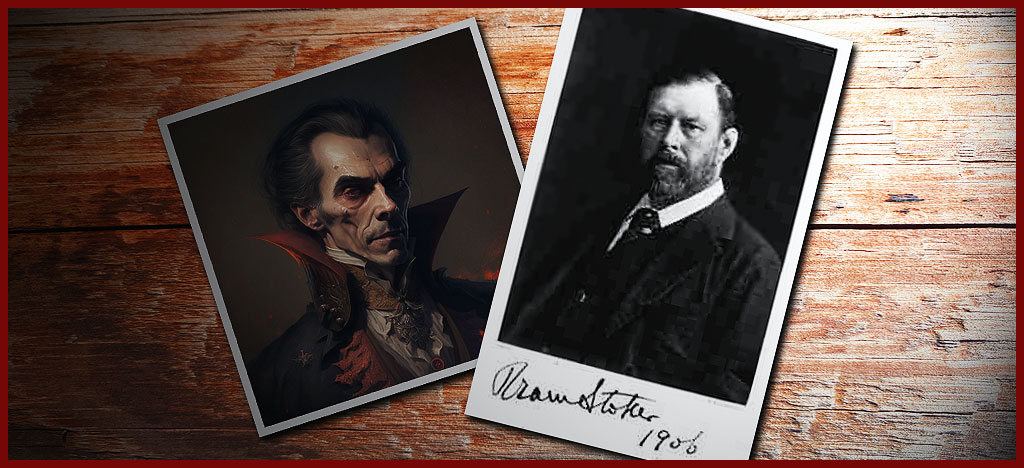
Bram Stoker: The Father of Dracula

Abraham ‘Bram’ Stoker is widely regarded as one of the most influential authors of Gothic horror fiction. He is best known for his novel Dracula, which has inspired countless adaptations and interpretations in various media.
But who was Bram Stoker, and what motivated him to create such a memorable and enduring character?
Bram Stoker was born in Dublin, Ireland, in 1847. He was a sickly child who spent most of his early years bedridden. Stoker later attributed his vivid imagination and fascination with horror stories to this period of isolation and boredom.
It has been claimed by some that his mother would enjoy telling her sickly young son morbid tales of the black death while he lay in his sick bed. Good parenting there, Mrs Stoker!
He studied mathematics at Trinity College, Dublin and graduated with honours in 1870 and went on to work as a civil servant and a theatre critic for the Dublin Evening Mail.
In 1878, he married Florence Balcombe, a former suitor of Oscar Wilde, and moved to London, where he became the personal assistant and manager of the famous actor Henry Irving as well as becoming the business manager of the Lyceum Theatre, which Irving owned. Travelling extensively with Irving, Stoker met many celebrities and influential figures of his time, including Arthur Conan Doyle, Mark Twain, Walt Whitman, and Theodore Roosevelt.
Stoker began writing novels and short stories in his spare time, mostly in the genre of horror and supernatural fiction. His first novel, The Primrose Path, was published in 1875. His most successful novel, Dracula, was published in 1897. It was based on extensive research on folklore, mythology, history, and geography.
Stoker drew inspiration for Dracula from various sources, such as the legend of Vlad the Impaler, the Transylvanian prince who was notorious for his cruelty and bloodthirstiness; the stories of Joseph Sheridan Le Fanu, an Irish writer of Gothic fiction; and the works of Emily Gerard, a Scottish author who wrote about the superstitions and traditions of Eastern Europe.

Dracula tells the story of Count Dracula, a centuries-old vampire who travels from his castle in Transylvania to England in search of new victims and power. He is opposed by a group of brave and resourceful men and women, led by Professor Abraham Van Helsing, a Dutch expert on occult matters. The novel is written in an epistolary format, consisting of letters, diary entries, newspaper clippings, telegrams, and phonograph recordings.
Dracula was not an immediate bestseller when it was first published, but it received positive reviews from critics and readers. It gradually gained popularity and recognition as one of the most original and influential works of Gothic horror fiction.
The novel has never been out of print since its publication and has been translated into more than 50 languages. It has also inspired numerous adaptations in film, television, theatre, comics, games, and other media.
Bram Stoker died in London in 1912 at the age of 64. He suffered from various illnesses throughout his life and his exact cause of death is unknown. Some scholars have speculated that he may have contracted syphilis or been poisoned by arsenic. He was cremated and his ashes are kept at Golders Green Crematorium in London.
The author’s legacy lives on through his works, especially Dracula, which continues to fascinate and terrify readers and audiences around the world.
Even today, Bram Stoker is widely regarded as one of the masters of horror fiction and one of the most influential authors in English literature.

© Colin Lawson Books